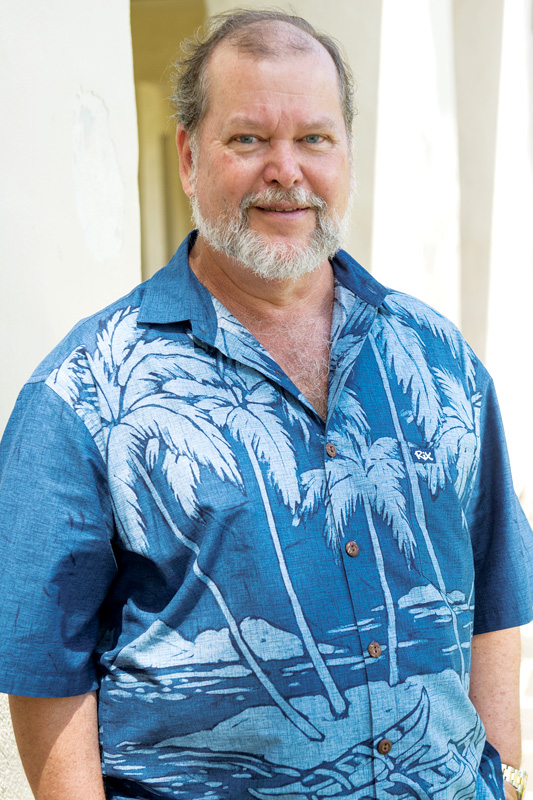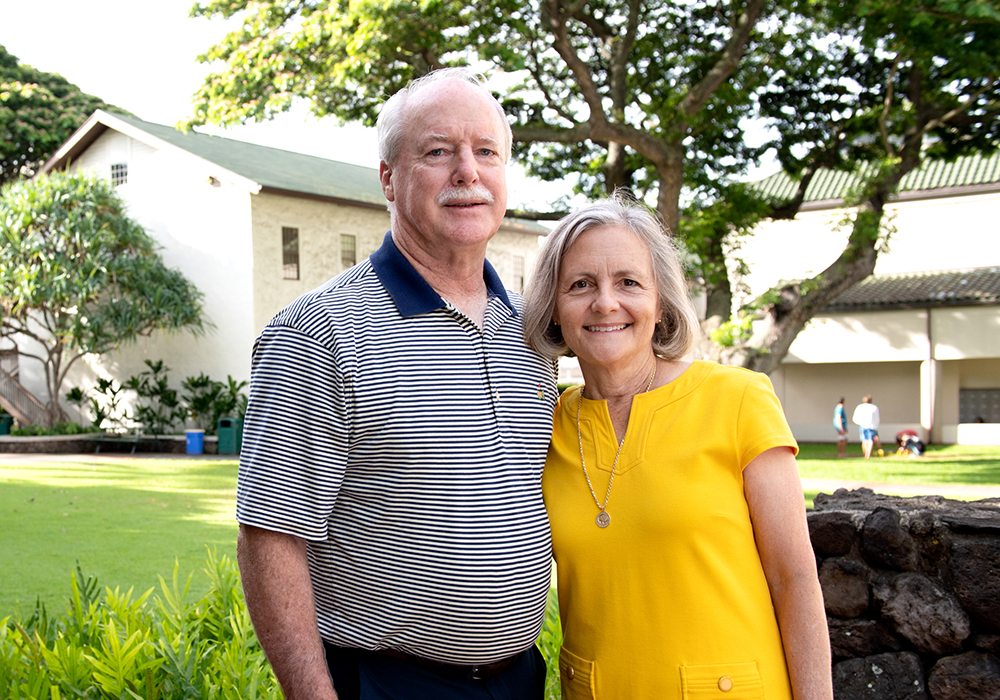
By Catherine Black ’94
In 1963, Patrick Kirch ’68 was an inquisitive 13-year-old growing up in Manoa Valley with a fascination for ancient civilizations fueled by long afternoons exploring old lo’i terraces and other traces of Hawai’i’s past.

Spurred by his precocious son’s curiosity, Patrick’s father approached then Bishop Museum Director Roland Force with a request: Were there any summer internships open to students? Force told the young Kirch to give him a call, which he did – repeatedly – until he was finally granted a meeting.
Kirch was sent to Yoshio Kondo, an eccentric second-generation Japanese zoologist who studied Hawaiian landsnails. Dr. Kondo sat Kirch down with a reel-to-reel tape recorder and a microphone and interviewed him at length. “I guess he liked what I said because he let me be part of the group,” remembers Kirch, adding: “That summer completely changed my life.”
With Kondo, Kirch learned to investigate, catalog and curate, and he found himself in the hallowed halls of one of the most important institutions of scientific research in the Pacific. It was intoxicating for the young teenager, who hadn’t yet begun his ninth-grade year at Punahou. Kondo took a liking to Kirch and asked the revered anthropologist Kenneth Emory if the boy could participate in one of the museum’s archaeological digs. When Emory refused, Kondo gave Kirch his tacit approval to undertake a research project of his own, provided he follow the correct protocol. When Kirch submitted his report from a simple sand dune dig at Moloka’i’s remote Halawa Valley (after convincing his father to let him tag along on a fishing trip), Emory had to admit that the work was good.
In the summers of 1965 and 1966, Kirch accompanied Emory’s team on archaeological digs on Hawai’i Island and Maui. The summer after graduating from Punahou in 1968, Kondo invited him on an expedition to the Loyalty Islands in Micronesia, after which Kirch traveled alone in Samoa, Tonga and Fiji. Before entering college, he had already discovered his lifelong passion (archaeology) and his specific area of focus (the Pacific).
The rest is history. Kirch completed his undergraduate degree at University of Pennsylvania in three years, followed by graduate school at Yale. He returned to Hawai’i to work at Bishop Museum for 10 years, until its emphasis on research began to decline. In 1989, he accepted a professorship at University of California, Berkeley, where he founded the school’s Oceanic Archaeology Laboratory. He has published more than 20 books and monographs, and hundreds of scientific papers, and is one of the foremost figures in Pacific Island archaeology today.
Kirch and his wife, Therese Babineau, had long intended to include Punahou in their estate plan, but it wasn’t until 2016, when reading about the Ku’u Punahou Campaign, that he realized the Hawaiian Studies curriculum was a strategic priority for the School. This got him thinking: He firmly believed in the power of education and had always been grateful to Punahou for the strong foundation it gave him in writing and independent thinking. After speaking with Director of Gift Planning Carrie Ogami, Kirch and Babineau designated their bequest intention to support an endowed program fund for Hawaiian Studies.
Decades of research have brought Kirch to see islands as “model systems. Because they’re islands, they’re circumscribed, self-contained and often you can learn about processes that are applicable to continents and the world at large. This is the sort of thinking that I would like to see get into curricula, because the world has a lot to learn from a place like Hawai’i.”
This spring, he visited campus for the first time in nearly three decades and met with Hawaiian Studies co-directors Malia Ane ’72 and Ke’alohi Reppun ’99, who confirmed for him that “things are definitely moving in a great direction.” Kirch’s generous gift to support the program’s growth in the future will be celebrated at his 50th Reunion in 2018.



